-
Sheldon Pinto
08th Sep 2015
Everyone’s buying an SD card these days, be it for a smartphone, a camera and sometimes even for your laptop or net book as additional storage. They come in different shapes and sizes and with all sorts of complicated markings and initials.
Buying one is fairly simple, you go online to a e-commerce website and click away depending on your storage needs, or simply head to your nearest retailer and ask him for his recommendations. But then you realise that this 32 GB SD card delivers choppy video recording. Clearly, it is wise to know what you want and what your device can handle, meaning it all boils down to 3 factors, speed, size and capacity.
Before we go ahead into the 3 factors, it is wise to order your memory card online, only if you are sure that your device supports it. The simplest way to do that is to avoid inaccurate details on e-commerce websites and head straight to your smartphone brand’s hardware specifications page.
1.Speed
Everyone loves speed. More speed is always better right? Well, not always, as it depends on your device.
Buying a speedy card makes sense only if your device records 4K video, or you will be clicking RAW images, processes that require large amounts of data to be transferred in one go. This is where we come to ‘Speed Class’
Speed Classes are set (or approximate) speeds defined by manufacturers of memory cards and the SD Association to help consumers select the right one, instead of stepping into the nitty gritties of read and write speeds etc.
Good thing for us, there’s not too many of them:
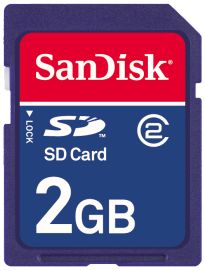
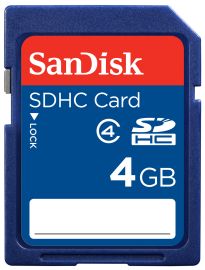

A 2 GB SD card without the 'HC' marking (first and second) and high-end SD card (third) with Class 10 and UHS 3 markings.
Class 2
Not many devices today support Class 2 memory cards. The problem is that the world has moved on, and things have gotten fast enough that even budget smartphones today support Class 10 cards. So if someone offers you a Class 2 card or a card that does not have any of the speed Class markings shown above, its best to reject it.Class 4, 6 and 10
Most smartphones and cameras support Class 4 cards and over. You may not necessarily need a Class 10 card. If your device is capable of recording only high definition (HD) video, you will not need anything over a Class 4-6 card. Step into the Full HD and 4K domain (along with RAW shooting) and a Class 10 card is a must. But these are limited to consumers.Ultra High Speed (U1, U3)
So what if you are a professional photographer with a professional DSLR? Well, you can still go in for a Class 10 card provided you do not go beyond Full HD video and don’t delve into the RAW shooting domain.For those into HDR video or any other heavy video recording applications and even pure RAW shooting (that involves massive file sizes with large buffers) the Ultra High Speed cards are for you.
These cards can be identified by their ‘U’ with the number mentioned inside the alphabet instead of the usual ‘C’ (up till class 10).
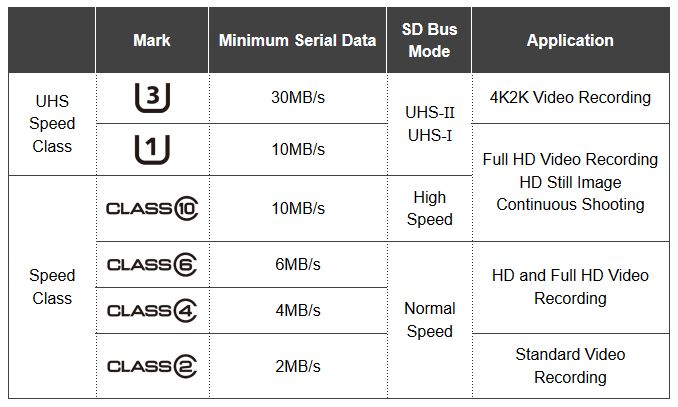
The Speed Class and the speeds delivered. It's wise to keep in mind that these are the minimum speeds.
Sony recently introduced a new range of Cyber-shot cameras, including the RX 100 IV and the RX 10 II. While both of these cameras are 4K compatible, they also come with a High Frame Rate video recording mode (HFR) that can record up to 1000 fps (frames per second).
Smartly enough, Sony also had to launch a special set of memory cards for these, so that owners could take advantage of recording HFR videos. This is because standard cards simply would not support the new HFR feature; such are the needs of today’s high-end point and shoots and DSLRs.
2.Size
The card size is clearly another important thing to note before you purchase your next smartphone or camera. You will obviously need to know how many can your device accept and how fast they need to be, like in the Sony scenario given above.
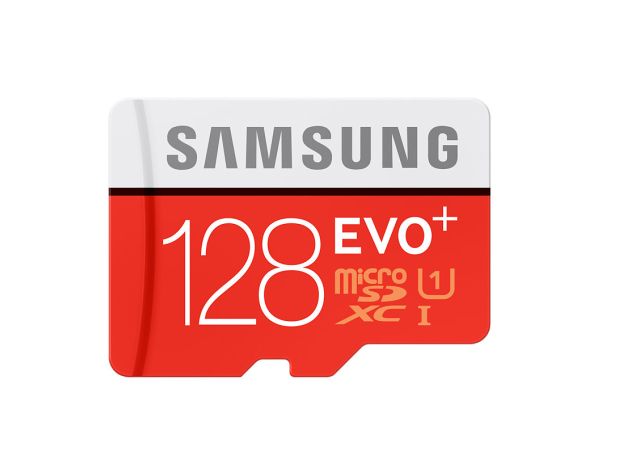
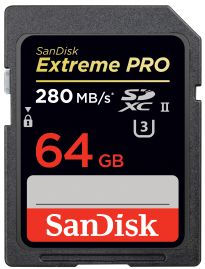
A micro SD card alongside a standard SD card.
Still then, size is important, but in a way follows the form of an object. Smartphones usually stick to Micro SD cards while point and shoots and DSLRs stick to standard SD cards. Good thing is with the available adaptors you can also switch between the two, but your camera’s file system will differ, so it is wise to check on that first. It is best not to share one SD card between two types of devices for this very reason.
3.Capacity
Here is where those SD or SDHC and even SDXC markings on a memory card come in. SD cards are your standard stuff, with memory capacities below 2 GB or at times 4 GB in size.
With today’s smartphone and devices easily supporting higher storage capacities, most of the cards available today will have the SDHC or High Capacity markings on them. These usually refer to cards built for everyday usage and consumer needs (although the consumer needs seem to tiptoeing into professional territory).
Next up is the pro-level stuff or the SDXC, where the XC stands for eXtended Capacity. These cards will usually paired up with a Class 10, U1 or U3 speed class markings and have been built for performance, meaning that they don’t come cheap.
So while purchasing a memory card be sure to check whether your device, supports that speed, type and capacity supported in the user manual or hardware page before you take the leap.
While it does not hurt to be future proof and purchase an SD card that is better than your current device, you also have to keep in mind that technology is progressing at a mind boggling speed. So when you upgrade, the standards of your future device may be a lot higher.
[Related: Top 5 Manual Compact Cameras Under Rs 50,000]
A Simple Guide To Choosing The Right SD Card | TechTree.com
A Simple Guide To Choosing The Right SD Card
There’s no need to buy an expensive one if your device cannot handle it.
News Corner
- DRIFE Begins Operations in Namma Bengaluru
- Sevenaire launches ‘NEPTUNE’ – 24W Portable Speaker with RGB LED Lights
- Inbase launches ‘Urban Q1 Pro’ TWS Earbuds with Smart Touch control in India
- Airtel announces Rs 6000 cashback on purchase of smartphones from leading brands
- 78% of Indians are saving to spend during the festive season and 72% will splurge on gadgets & electronics
- 5 Tips For Buying A TV This Festive Season
- Facebook launches its largest creator education program in India
- 5 educational tech toys for young and aspiring engineers
- Mid-range smartphones emerge as customer favourites this festive season, reveals Amazon survey
- COLORFUL Launches Onebot M24A1 AIO PC for Professionals







TECHTREE